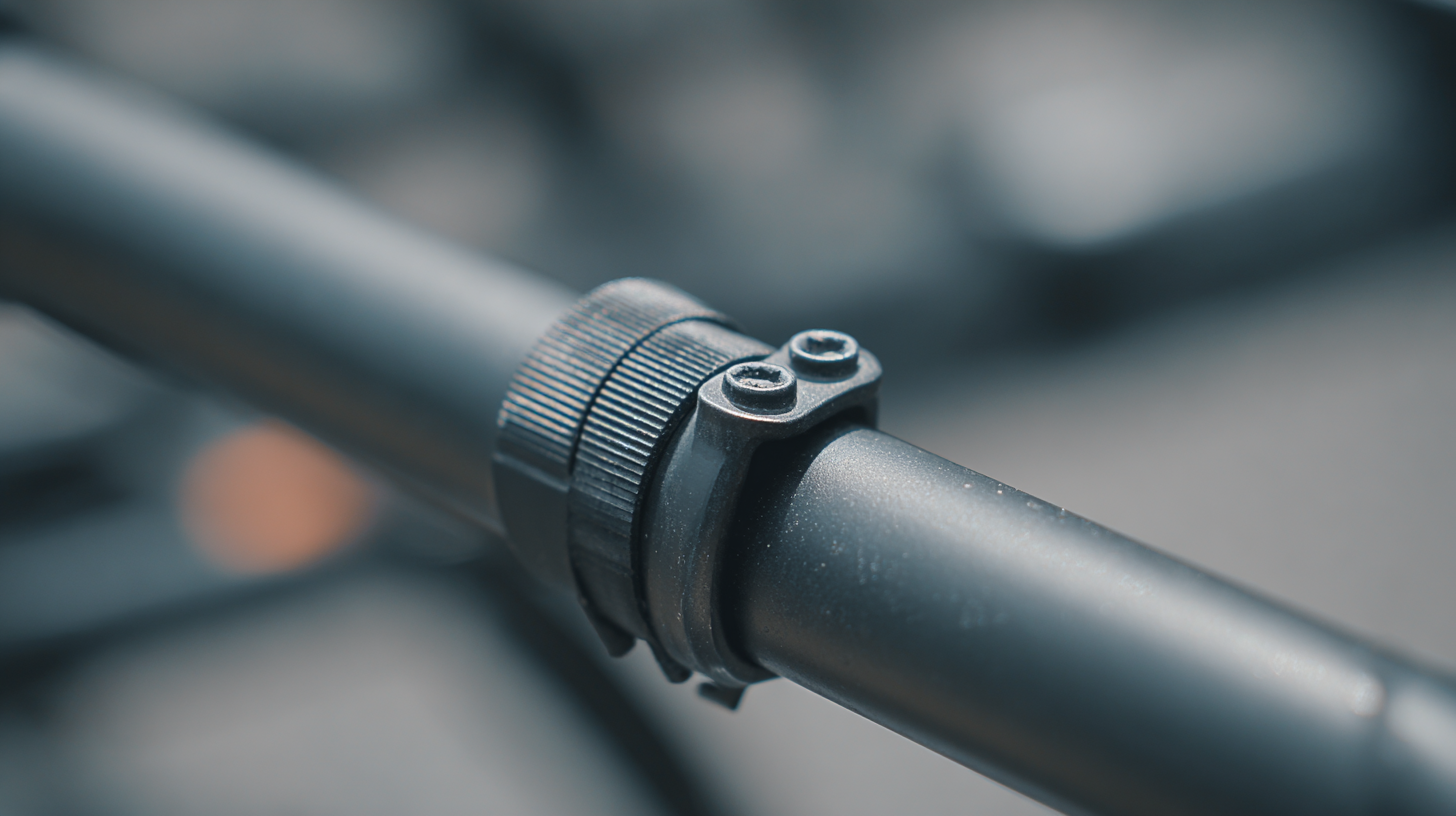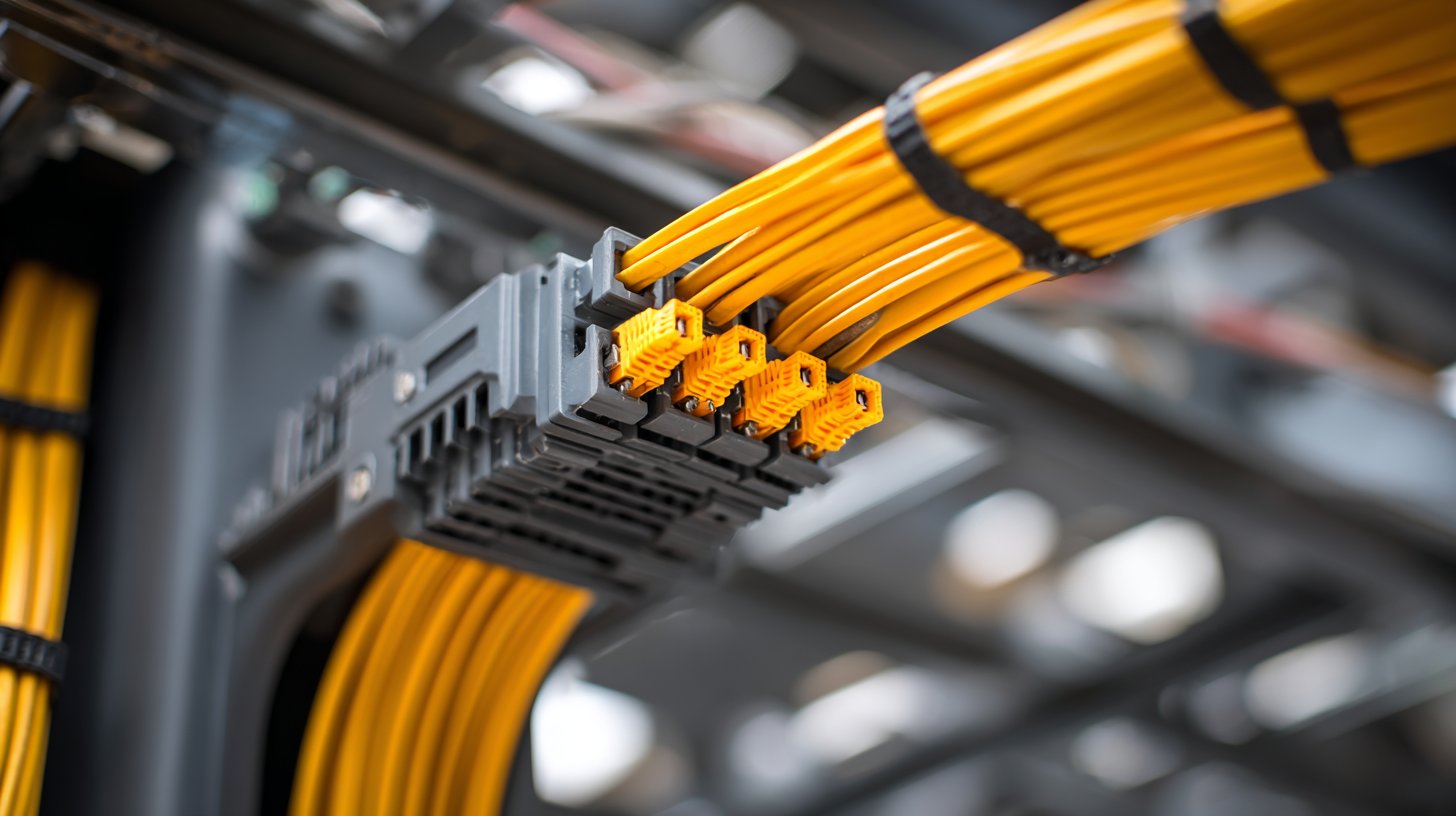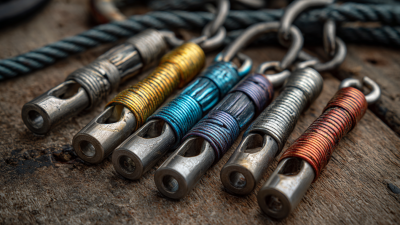In today's rapidly evolving communications landscape, maintaining reliable connectivity is more crucial than ever. According to a recent industry report by the International Telecommunication Union, global internet usage has surged to over 4.9 billion users, driving a significant demand for efficient cable systems that can support rising data transmission needs. One essential component in this arena is the Bus Drop Cable Support Grip, which enhances the stability and performance of overhead cables in various environments. By providing a secure and robust attachment mechanism, this specialized grip minimizes the risk of wear and tear that can compromise connectivity. As industries increasingly rely on high-speed data and uninterrupted service, understanding the function and benefits of Bus Drop Cable Support Grips becomes essential for engineers and technology professionals striving to deliver seamless connectivity solutions.

Bus drop cable support grips are essential components in the telecommunications and utility industries, designed to secure and stabilize overhead cables. These grips enhance connectivity by ensuring that cables are held firmly in place, significantly reducing strain and potential damage. According to a report from the International Telecommunication Union, effective cable management can lead to a 30% reduction in maintenance costs, making support grips a vital investment for companies looking to optimize their operations.
When installing bus drop cable support grips, it's crucial to select the right size and type for the specific cable being used. A well-fitted grip will provide maximum support without limiting cable movement or flexibility. Tip: Always consult the manufacturer's specifications to choose the appropriate grip, as this can extend the lifespan of your cabling infrastructure and prevent unexpected downtimes.
Moreover, regular inspections of the support grips can prevent costly failures and enhance the reliability of cable systems. According to the National Electrical Manufacturers Association, 60% of failures in overhead lines are attributed to wear and tear in support systems. Tip: Implement a maintenance schedule that includes checking the integrity of support grips to ensure they remain effective over time. This proactive approach not only safeguards connectivity but also supports overall operational efficiency.
Bus drop cable support grips play a crucial role in enhancing connectivity by ensuring that cables remain securely in place, thereby minimizing disruptions in service. These grips are designed to prevent sagging and snapping of cables, which can lead to connectivity issues in both commercial and residential applications. Their robust construction and user-friendly design facilitate greater reliability and longevity, making them an essential tool for anyone working with bus drop cables.
When utilizing bus drop cable support grips, it’s important to consider a few tips to optimize their effectiveness. First, ensure that you select grips that are compatible with the cable sizes and types you are using. This compatibility is vital for maintaining the integrity of the cable support system. Additionally, regular inspection of the grips can help catch any wear and tear early on, preventing potential failures and enhancing overall system reliability. Lastly, during installation, make sure to follow manufacturer guidelines closely to ensure optimal performance and safety in your connectivity solutions.
 When installing Bus Drop Cable Support Grips, it's crucial to ensure optimal connectivity and performance. Begin by selecting the appropriate support grip that matches the cable size and weight. Properly sizing the grip can prevent potential slippage and maintain the integrity of the connection.
When installing Bus Drop Cable Support Grips, it's crucial to ensure optimal connectivity and performance. Begin by selecting the appropriate support grip that matches the cable size and weight. Properly sizing the grip can prevent potential slippage and maintain the integrity of the connection.
During installation, follow a systematic approach. First, secure the grip at the designated attachment point on the cable. It's important to maintain a consistent tension while adjusting the grip to ensure reliability. Remember to double-check all connections, as loose fittings can lead to connectivity issues down the line.
Tip 1: Use a torque wrench to achieve the recommended tension specifications during installation; this ensures a robust connection without damaging the cable.
Tip 2: Consider the environment where the cables will be installed. If the area is prone to moisture or extreme temperatures, choose grips made from materials resistant to these elements to enhance durability and performance.
By adhering to these guidelines, you will ensure that your Bus Drop Cable Support Grips function at their best, enhancing overall connectivity in your electrical infrastructure.
Bus drop cable support grips are essential components in various industries, providing robust support and reliability for telecommunications and electrical connections. These grips are commonly used in utility companies, telecommunications providers, and data centers, where secure cable management is critical to maintaining seamless connectivity. They help suspend and stabilize cables, reducing strain and minimizing the risk of damage from environmental factors or mechanical stress.
In the telecommunications sector, bus drop cable support grips are crucial for supporting both aerial and underground cable systems. Their design allows for easy installation and adjustment, making them versatile tools for installers. Additionally, industries such as renewable energy utilize these grips to secure electrical cables for solar panels and wind turbines, ensuring a stable and reliable connection.
**Tips**: When choosing the right bus drop cable support grip, consider factors such as cable weight, environmental conditions, and installation location. Also, regularly inspect the grips for wear and tear to ensure continuous optimal performance. Finally, always follow manufacturer guidelines during installation to achieve the best results.
Bus drop cable support grips are essential components in modern telecommunications and electrical networks, significantly impacting network reliability and efficiency. According to a report by MarketsandMarkets, the global market for support grips is expected to grow by over 6% annually, driven by the increasing demand for reliable infrastructure in data centers and telecommunications systems. These grips provide stable support for bus drop cables, ensuring that they remain secure and properly aligned, which minimizes the chances of cable damage or signal interference.
Moreover, the use of bus drop cable support grips enhances overall system performance. A study from the IEEE reveals that proper cable management can reduce network downtimes by as much as 30%. This is crucial in environments where connectivity is paramount, as network disruptions can lead to significant losses in productivity and revenue. By effectively distributing the weight of the cables and allowing for cable movement, support grips not only protect the integrity of the cables but also facilitate better airflow and thermal management. This ensures that systems operate within optimal parameters, ultimately leading to improved efficiency and reliability in network performance.







